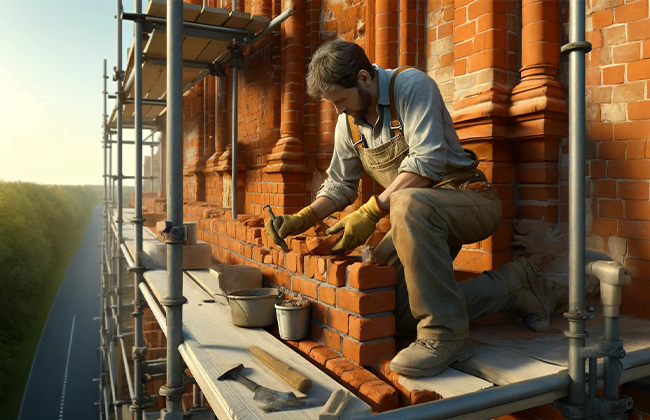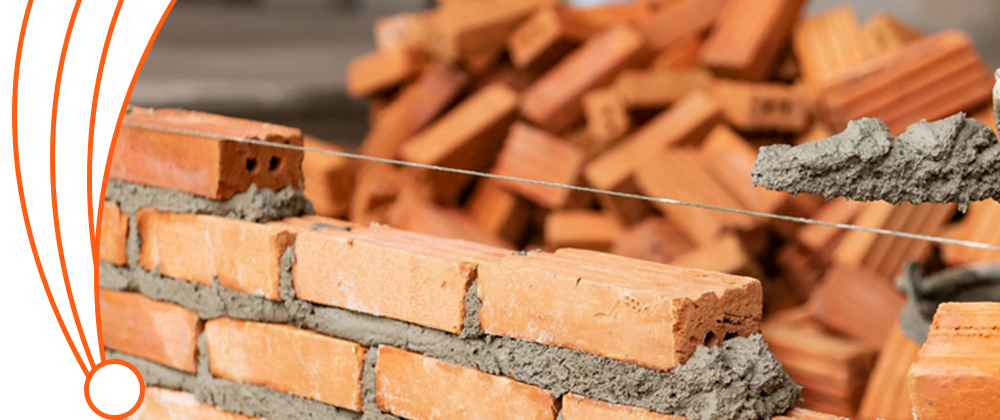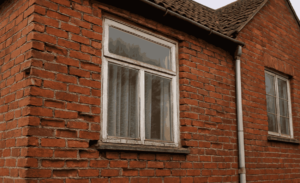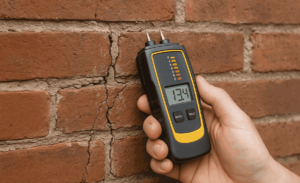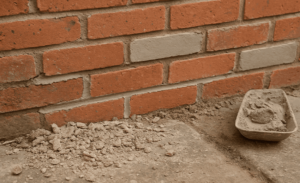Brickwork restoration is vital for maintaining the structural soundness and visual appeal of brick buildings. This guide delves into effective techniques and strategies essential for successful brickwork restoration, emphasizing the importance of precise assessment, cleaning, and repair. Understanding the nuances of this process helps preserve the historical integrity and value of brick constructions, ensuring they withstand time and elements.
Understanding Brickwork Restoration
Dive into the essential practices of brickwork restoration, a critical process for preserving the durability and beauty of brick structures. This section outlines the key steps involved, from initial assessment to the final touches of sealing and waterproofing, ensuring a comprehensive restoration approach.
What is Brickwork Restoration?
Brickwork restoration is all about bringing old brickwork back to life, making sure it looks good and stays strong for years to come. It’s not just about fixing cracks or replacing loose bricks; it’s a comprehensive approach to renewing the entire structure. This could mean tackling problems caused by weather damage, wear and tear, or just age. Think of it as giving your brickwork a health check-up and then treating it to whatever it needs to be its best self again.
Why is Brickwork Restoration Important?
Let’s talk about why restoring brickwork really matters. First off, it’s crucial for keeping the building safe and sound. Damaged or deteriorating bricks and mortar can lead to structural problems that are not only expensive to fix but can also be dangerous. Plus, there’s the look of the place to think about. Restored brickwork can dramatically improve a building’s appearance, enhancing its character and charm. Moreover, if you’re dealing with a historic building, maintaining its original brickwork is essential for preserving its historical significance and value. So, by restoring brickwork, you’re not just fixing up old walls; you’re investing in the building’s future, ensuring it looks great and stands strong for many more years.
The Process of Brickwork Restoration
Restoring brickwork is like taking a journey back in time to bring back the original look and strength of a building’s exterior. It involves several careful steps to ensure everything is done right.
Assessing the Damage
Before we roll up our sleeves and start fixing things, we need to understand what we’re dealing with. Assessing the damage is like being a detective, looking closely at the brickwork to spot any signs of trouble—cracks, erosion, disintegration—you name it. This step is crucial because it tells us exactly what needs to be fixed and how urgent it is.
Tools and Techniques for Assessment
To do this properly, we use a few different methods:
- Visual inspection: This is where we take a good, close look at all the brickwork.
- Use of drones: For those hard-to-reach places, drones can be super helpful to get a clear view without scaffolding.
- Moisture analysis: This helps us find out if there’s any moisture trapped inside the bricks, which can cause problems down the road.
Cleaning Brickwork
Once we know what we’re dealing with, it’s time to clean up. Cleaning the brickwork might sound simple, but it’s got to be done right to avoid making things worse.
Methods of Cleaning
Here’s how we can clean brickwork safely and effectively:
- Gentle brushing: Using soft brushes to get rid of loose material without scratching the bricks.
- Low-pressure washing: This method uses water at a gentle pressure to clean the bricks without damaging them.
- Chemical cleaners: For tougher stains, we might need some chemical cleaners, but we use them cautiously to avoid harming the brick and mortar.
Repairing Brickwork
Next up, we fix the actual damage. This could mean replacing broken or chipped bricks and repointing, which is when you take out the old mortar and put in new stuff.
Choosing the Right Mortar
It’s super important to pick the right mortar because it needs to:
- Match the original materials: So everything looks consistent and holds together well.
- Color matching: We want the new mortar to blend in, not stick out.
- Longevity and weather resistance: The new mortar should last a long time and stand up to the elements.
Sealing and Waterproofing
After all the repairs, we don’t want to do it all over again soon, right? That’s where sealing and waterproofing come into play. It’s like putting a raincoat on the brickwork.
Sealant Options
For sealing, we can go with:
- Silicone-based sealants: These are great because they’re flexible and waterproof.
- Acrylic sealants: These are also used for their durability and effectiveness in protecting the brickwork.
Common Challenges in Brickwork Restoration
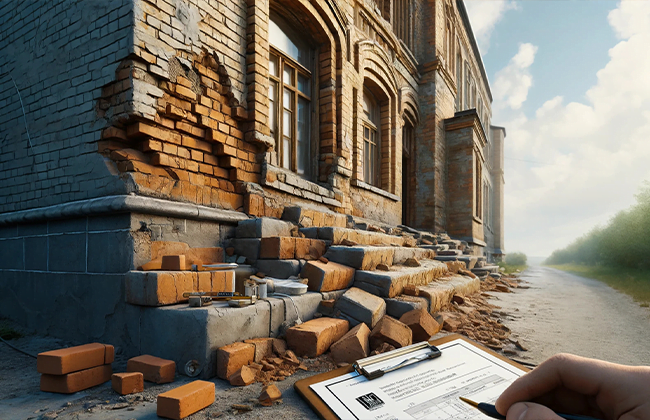
Restoring brickwork isn’t just about fixing what’s visible to the naked eye. Sometimes, the real challenges lurk below the surface or in the details of matching and compliance. Let’s unpack some of the common hurdles that might pop up during a restoration project.
Matching Materials
First things first: getting the right materials. It sounds simple, but finding bricks and mortar that match the original materials in color, texture, and strength is no small feat. This step is crucial for a few reasons:
- Aesthetic Unity: You want the restored area to blend seamlessly with the original, so it doesn’t stick out like a sore thumb.
- Structural Integrity: The new materials need to perform just as well as the old ones, bearing similar weight and withstanding similar environmental stresses.
We have to be detectives here, sometimes going to great lengths to source materials that are not only a close match but will also last just as long as the originals. It may involve contacting specialized manufacturers or even using custom mixes for mortar.
Structural Issues
Now, let’s talk structure. Before you even think about how things will look, you’ve got to make sure everything is structurally sound. Addressing any underlying issues is key:
- Safety First: Compromised structural integrity can pose risks, not just to the building but to those around it.
- Foundation for Aesthetics: You can’t put a fresh coat of paint on a crumbling canvas. Similarly, aesthetic restorations won’t hold up if the structure itself isn’t solid.
Professionals often use advanced techniques like structural reinforcements and detailed engineering assessments to ensure that everything is up to snuff before the real beautification begins.
Regulatory Compliance
Lastly, we can’t forget about the rules. Especially with historic buildings, regulatory compliance is a major player:
- Preservation Laws: Many areas have strict guidelines on how historic buildings can be altered, to preserve their historical significance.
- Building Codes: These are in place to ensure safety and must be adhered to, no matter how minor the restoration might seem.
Navigating these regulations often requires a bit of extra homework and possibly the help of experts in heritage conservation to ensure that every aspect of the restoration is legally sound and up to code.
Maintenance Tips for Restored Brickwork
Once your brickwork is beautifully restored, keeping it in top shape is the next step. Here’s how you can maintain its look and durability without breaking a sweat. Remember, a little care goes a long way!
Regular Inspections
Make it a habit to check up on your brickwork. Think of it like a yearly check-up for your home:
- Preventative Care: By scheduling annual inspections, you can catch small issues before they turn into big problems. It’s about being proactive rather than reactive.
- Professional Eyes: Sometimes, it helps to bring in a specialist who can spot things you might miss. They can give you a heads-up on potential trouble spots and advise on any necessary actions.
These regular check-ins can save you a lot of time and money in the long run, as catching issues early often means simpler and cheaper solutions.
Cleaning
Keep your brickwork clean; it’s not just about aesthetics, it’s about longevity:
- Routine Cleaning: Dirt and grime aren’t just unsightly; they can also trap moisture against the bricks, leading to erosion over time. Regular cleaning helps prevent this.
- Gentle Methods: When cleaning, always opt for gentle methods. Harsh chemicals or high-pressure washes can do more harm than good, stripping away protective layers and even damaging the mortar.
A simple soft brush or low-pressure water spray every now and then can keep your brickwork looking fresh without any risk of damage.
Immediate Repairs
If you spot a crack or some loose mortar, don’t wait:
- Quick Fixes: Small issues can turn into big troubles if left unattended. By fixing problems as soon as they’re noticed, you can prevent the spread of damage.
- Right Repairs: Make sure the repairs are done correctly. Using the right materials and techniques ensures that repairs last and blend seamlessly with the existing brickwork.
Being vigilant and responsive about repairs can greatly extend the life of your restored brickwork, ensuring it stays beautiful and strong for years to come.
Conclusion
In conclusion, brickwork restoration is not just about repairing visible damage but about restoring a structure to its original state with as much attention to detail as possible. This comprehensive guide provides the insights and techniques necessary for tackling brickwork restoration projects effectively, ensuring the longevity and beauty of your brickwork for years to come.
FAQs
Q: What is the first step in brickwork restoration?
A: The first step in brickwork restoration is a thorough assessment to identify all the damage, including cracks, erosion, and any other structural weaknesses that need attention.
Q: How often should brickwork restoration be performed on a building?
A: Brickwork restoration frequency depends on the building’s exposure to harsh weather and the age of the structure, but generally, a detailed inspection every 5 to 10 years is recommended.
Q: What are the best practices for cleaning during brickwork restoration?
A: During brickwork restoration, it’s best to use gentle, non-abrasive cleaning methods such as soft brushing and low-pressure water rinsing to avoid damaging the bricks and mortar.
Q: Can brickwork restoration improve the value of my property?
A: Absolutely, brickwork restoration not only enhances the aesthetic appeal of your property but also strengthens the structure, potentially increasing your property’s market value.
Q: What should I avoid doing during brickwork restoration?
A: Avoid using harsh chemicals and high-pressure washing, as these can cause irreversible damage to both the bricks and the mortar, compromising the integrity of the structure.

